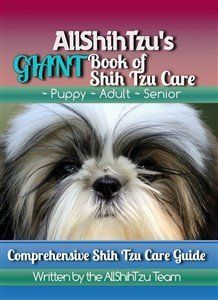Shih Tzu Hair Loss
Overview
Please note: AllShihTzu is reader-supported, and some of the product suggestions on this page are affiliate links. As an Amazon Associate we earn from qualifying purchases. This is at no extra cost to you and helps keep this site running.
Already know the details and possible causes, and just want to know how to help? Jump to How to Resolve Hair Loss and Help a Shih Tzu Regrow Their Coat.
Signs of Hair Loss
Causes of Hair Loss
Acantosis Nigricans
Acanthosis Nigricans, also known as keratosis nigricans, is a rare but possible condition in Shih Tzus, characterized by dark, thickened skin in areas like the armpits, groin, and neck. This condition may cause discomfort, scratching, odor, and hair loss due to secondary infections. It's typically caused by factors such as genetic predisposition, hormonal imbalances, obesity, and friction from skin folds. Diagnosis involves a clinical exam by a vet, along with diagnostic tests like skin scrapings and blood tests to confirm the condition. Treatment focuses on managing symptoms through medicated shampoos, antibiotics, dietary changes, and weight management, with ongoing care to adjust treatments as necessary.
Allergic Dermatitis
Alopecia X
Cushing's Disease
Dermatomyositis
Fleas
Hypothyroidism
Mange
Stress Induced Licking
How to Resolve Hair Loss and Help a Shih Tzu Regrow Their Coat
If the Coat Does Not Grow Back
Despite health issues (and thus their treatments) ruled out and at-home remedies, sometimes a coat will not grow back, or may only partially fill in. In these cases, do keep checking back with the veterinarian, as new testing and new treatments may come out in future. In the meantime, you may wish to obtain some soft, organic cotton shirts and other non-irritating clothes for your sweet Shih Tzu, to help ward off chills and offer them a sense of comfort.
More Articles for You:
10 Must-Haves Under 10 Buckaroos - On a budget but still want the best for your Shih Tzu? These clever care items are all easy on the wallet and big on everyday comfort, convenience and cuteness.
Top Treats for Shih Tzus with Sensitive Stomachs – If your Shih Tzu has a tummy that’s quick to protest, finding the right treat can feel like a guessing game. Thankfully, there are gentle options that dogs find super-delicious. See our list of the best belly-friendly treats.
Clever Gadgets to Simplify Life with a Shih Tzu - Clever tools, handy devices, and helpful doodads that can make daily routines easier and a whole lot more fun for both you and your little guy or gal.
Best Interactive Toys to Keep Your Shih Tzu Busy - If you're looking for some great toys to help teach independent play or some ways for your sweetie to stay occupied when your focus is elsewhere, you'll love these finds.
Seasonal Care Articles:
Shih Tzu Summer Care Tips - When the sun's shining bright and the temperatures are going up, it's time to reassess things for your little guy or gal. See our top tips to help ensure your Shih Tzu has a safe, happy and comfortable summer.
Shih Tzu Winter Care Tips - When snows coming down and the temperatures are dropping, it's time to winterize your little guy or gal. See our top tips for making sure your Shih Tzu is happy, healthy and safe during the winter season

